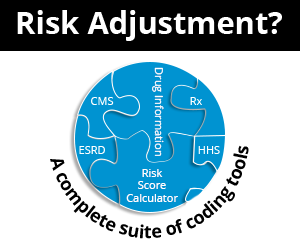
Rules for Choosing the First Listed Diagnosis
May 5th, 2017 - Chris Woolstenhulme, CPC, CMRSThe ICD-10-CM Guidelines will direct you when coding as to which diagnosis should be first listed and what should not be listed first. Pay careful attention to ensure correct coding and avoid claim denial. There are a few basic rules you should be familiar with as well as common issues when selecting the first listed code on your claim form.
- When using ICD-10-CM, the term "first listed diagnosis" is used instead of the principal diagnosis. This is where ICD-10-CM coding guidelines are used and take priority over other coding rules in the outpatient setting.
- The reason for the encounter documented in the medical record will generally be the first listed diagnosis. If there is no specific diagnosis established and the patient presents with only signs or symptoms, the signs and symptoms may be the first listed diagnosis.
- If a patient is seen for a procedure/surgery, the reason for the encounter (procedure/surgery) is the first listed diagnosis. If a complication develops during the procedure or surgery, the complications are listed after the first listed diagnosis.
For hospital charges, the diagnosis is given upon discharge: The Uniform Hospital discharge Data Set (UHDDS) states the definition of the principal diagnosis is: “That condition established after study to be chiefly responsible for occasioning the admission of the patient to the hospital for care.”
Signs and Symptoms
Coding for signs and symptoms from Chapter 18, should not be used if there is a more definitive diagnosis. For example, do not code the first listed diagnosis as a fever if the patient has influenza with pneumonia; you might want to code from J09-J18 Influenza and pneumonia. It is acceptable to code with signs and symptoms if there has been no definitive diagnosis made.
However, if there are signs and symptoms commonly associated with a disease or illness, they should be reported. Signs and symptoms that may not be a part of the disease should be reported as well.
Multiple Codes
There are times when a single condition may require multiple coding. This is where you may see a “Use additional” note, or a note that states “Code first”. Watch the instructional notes carefully. If coded incorrectly and missing the instructional notations, it could result in a claim denial or medical record review.
Using NOS and NEC codes
If a specific code is not available for a condition, you may need to report an NOS code, “Not otherwise specified”. Coders also use this code if there is not enough documentation to assign a more specific code. Keep in mind when using NOS codes; it is viewed similar to an unspecified code, causing a red flag with payers requiring more attention. Another code selection may be an NEC code “Not elsewhere classifiable”.
NOTE: Keep in mind using these codes; these should be used as the last resort as they are not favored due to lack of specification or medical necessity.
Z-Codes
There are certain Z-codes that are listed as a principal or first listed diagnosis code if it is the only encounter for the visit. If there are multiple encounters on the same day, the Z-Code rule would not apply.
Chronic and Acute Conditions
You may have one condition that is stated as acute and chronic. In this situation, you would code both but list the acute condition first.
Rule out or Probable?
There are no codes for rule-out, probable, suspected, likely, uncertainty or questionable. While these may be coded for inpatient admissions, they are not coded with ICD-10-CM in and out patient settings. To code this correctly, you would select the appropriate code R00-R99, Chapter 18; Symptoms, Signs and Abnormal Clinical and Laboratory Findings, Not Elsewhere Classified.
Report Diagnosis Only Once
Diagnosis codes should only be reported once per encounter, including bilateral conditions.
Report all conditions that coexist.
Bilateral Conditions
If there is a condition that is documented as bilateral, verify if there is a bilateral code that can be reported. If there are bilateral codes and the laterally is not listed in the medical record, you would either query the provider or code it as unspecified side.
External Cause Codes
Coding external cause codes should be assigned when applicable, as well as the activity (Y93-) code is assigned for an encounter. These codes are found in chapter 20 - External causes of morbidity (V00-Y99).
- Do not assign a Y99- code in the case of:
- Poisonings
- Adverse effects
- Misadventures
- Late effects
- An external cause status code is used only once, at the initial encounter for treatment
NOTE: Only one code from category Y99- should be recorded on a medical record.
Reporting BMI
The BMI, coma scale, and NIHSS codes should only be reported as secondary diagnoses.
Code assignment is always based on the providers documentation, but remember the ICD-10-CM official guidelines will give you the steps you need for correct coding and coding placement.
Ref: 2017- ICD-10-CM Official Guidelines for Coding and Reporting
###
Questions, comments?
If you have questions or comments about this article please contact us. Comments that provide additional related information may be added here by our Editors.
Latest articles: (any category)
Artificial Intelligence in Healthcare - A Medical Coder's PerspectiveDecember 26th, 2023 - Aimee Wilcox
December 22nd, 2023 - Find-A-Code
December 19th, 2023 - Aimee Wilcox
December 12th, 2023 - Aimee Wilcox
November 14th, 2023 - Aimee Wilcox
October 26th, 2023 - Wyn Staheli
October 11th, 2023 - Wyn Staheli
